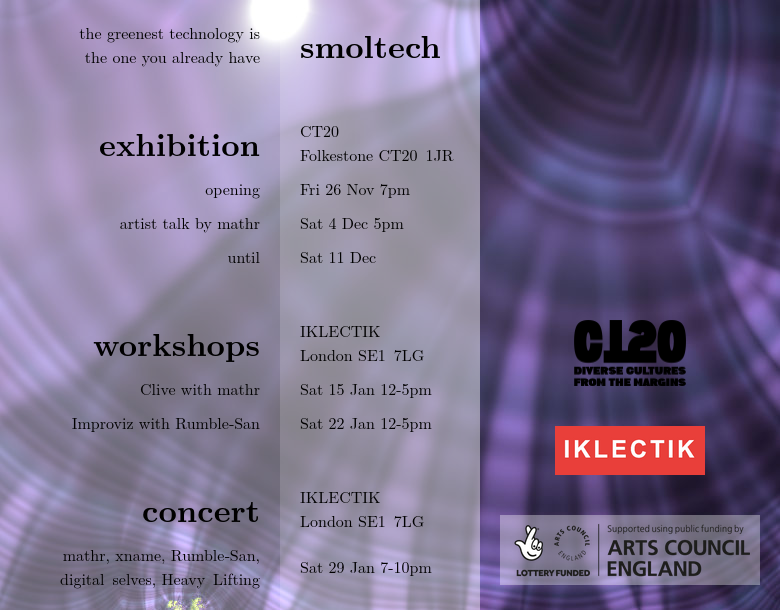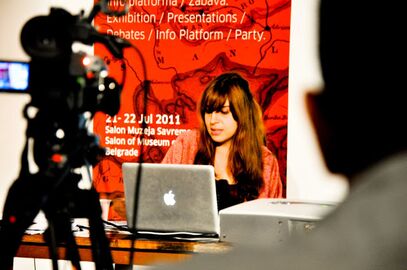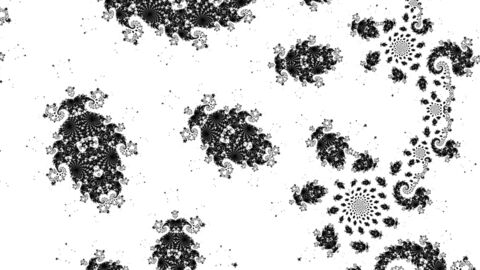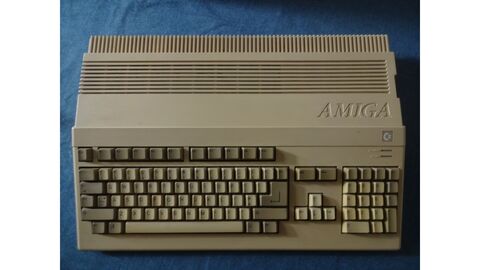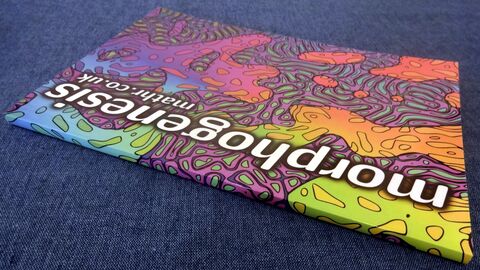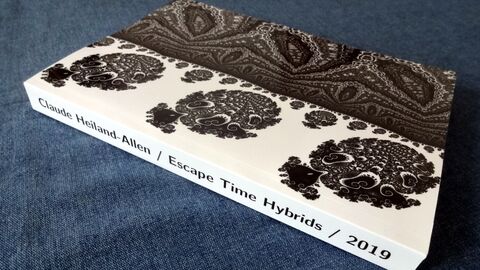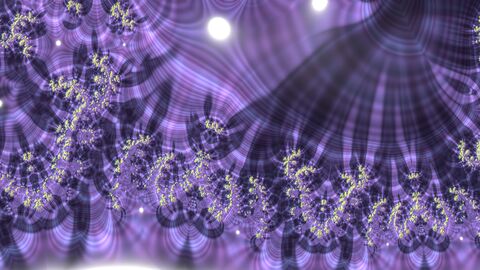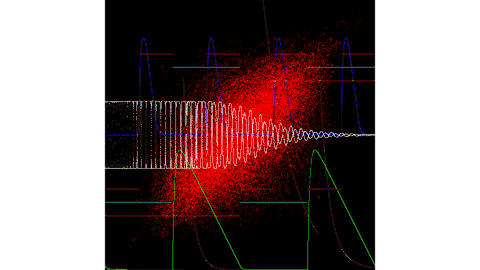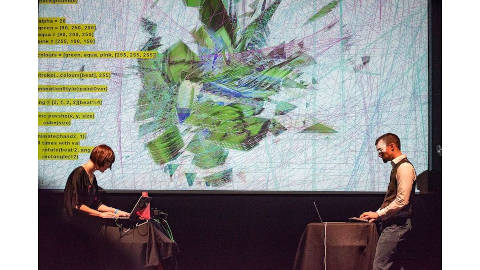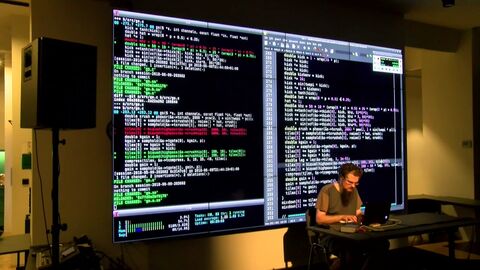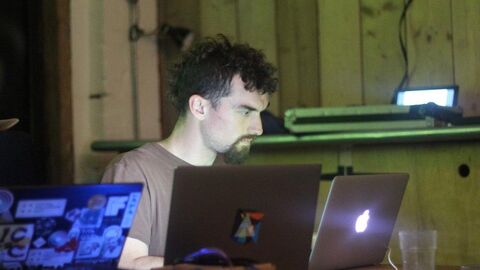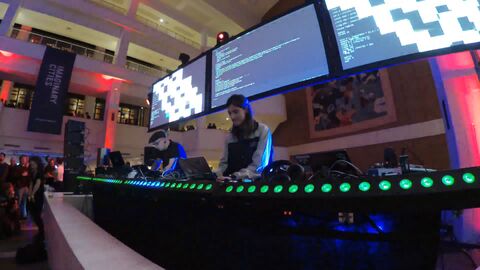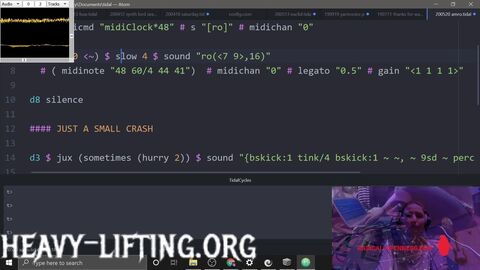CT20, 73 Tontine Street, Folkestone CT20 1JR, ct-20.org
opening Friday 26th November 2021, 7pm
artist talk by mathr Saturday 4th December 2021, 5pm
until Saturday 11th December 2021
The exhibition is presented as expressing concern about techno-surveillance capitalism and abuse of power of hyper-structures such as industrial-scale operation data centres consuming a massive amount of electricity, and server farms consisting of thousands of computers which require a large amount of power to run and to keep cool. Also, crypto mining has grown exponentially in the last few years, growing their energy consumption. In other words, cryptocurrency mining surpasses entire countries’ energy consumption, so it urges to spread awareness about the potential environmental costs of technology.
Furthermore, we are entering an age of mass extinction brought on by excesses of technology resources exploitation, when obsolescence becomes a transformative situation of the human social landscape. Economically and ecologically, e-waste presents a massive environmental catastrophe, transforming planetary geological eras and environments.
The exhibition proposes using technology in an ethical/ecological applicability, searching for a lower ecological impact, representing an alternative to Big Tech (Google, Amazon, Facebook, Microsoft, Apple). Most of these alternatives are connected to the open- source movement and also degrowth. Smoltech is one of these technological movements representing an alternative to tech development, usage, and consumption. Smoltech is a movement to reduce wasteful technology use. It promotes a long-term usage of technology, discouraging throw away culture, preventing e-waste, and developing hacker practices in media archaeology labs that collect old computers and tech for their survival.
Individuals are using their newly expanded practical freedom to act and cooperate with others in ways that improve the practised experience of democracy, justice and development of a critical culture and community, where collaboration and self-organisation are shared across both business and free software / open hardware, as declared by Yochai Benkler. The degrowth movement proposes an autonomous perspective towards capitalism and the globalised world through artivism, care revolution and climate justice based on the environmental movement and radical ecology democracy, proposing food sovereignty practices that serve as a model for Technological Sovereignty. In addition, degrowth practices apply the principles of free software movement and the commons’ policies towards a solidarity economy and unconditional basic income.
The exhibition consists of different works such as pure-data sound works and different audio-visual, multimedia, and interactive installations. The artist works using free software and develops his programs to create beautiful fractals, digital creations and new media environments. Claude’s works show the relationship between technology and creativity using computing to challenge conservative positions of technological corporations because of the potential for social change that new/old media and open source have. The audiences will gain an aesthetical experience within the exhibition by combining computer science, performance art, music, technology, fractals, maths, and software programming.
Research References
https://wiki.xxiivv.com/site/bookmarks.html
Tools to Measure Software Energy Consumption from your Computer
Curated by Laura Netz.
Laura Netz (Barcelona, 1982). Curator, artist, and researcher. Currently, she is an MPhil student at CRiSAP – UAL, where studies the new tendencies in curatorial practices in sonic arts. In 2006, she graduated in Art History (University of Barcelona). Consequently, studies at Master in Cultural Practices and New Media Art (University Ramon Llull). In 2009, establishes in London where attends the Curating course (Central Saint Martins, UAL). One year after, she was granted to study at MAH Media Art Histories (Donau University, Krems, Austria). In 2011, attends the professional course about New Media Curating, led by Beryl Graham (University of Sunderland). Interested in sound art, science, technology and digital media, she is an active participant in hacking culture.
I’m an artist that works primarily with computer software. My work often deals with the complex emergent behaviour of simple systems, and by their nature these can require many calculations to be performed to reach the end result of an image, a sound, or a video. Often the thing I’m interested in is the emergence itself, for example my piece RDEX (2009), which was exhibited here in 2019 as part of Sounding DIY III Vitalist Materialism curated by Laura Netz, has the computer making a 4-dimensional map of the parameter space of a reaction diffusion system over however long a period the show is on for, so the appearance at the end is quite different to the start.
One thing I’ve noticed when developing new work, is that the computational load performed by the piece has tendency to expand to fill the computational power available to it. Thus Rodney (2020) needs a powerful late 2010s computer consuming 150W to autonomously explore fractals in realtime, and Deep Disco (2021) stretches the limits of realtime digital audio signal generation on a mid 1980s CPU consuming 10W, meanwhile Puzzle (2008) was already pushing the capabilities of a mid 2000s laptop consuming an estimated 50W.
So there is this temptation to buy a new, faster machine. I’ve fallen for it a few times. But now I think I have had enough of new technology, especially given the climate catastrophe that is approaching fast. We need to stop making and buying so much new hardware and use the hardware we have for much longer:
- a billion smartphones are made in a year [1]
- making a phone accounts for 85-95 percent of its annual carbon footprint [2]
- manufacturing a laptop emits 119 kg of carbon dioxide, using it emits 10 kg a year [3]
Not to mention the other costs involved in mineral mining and e-waste disposal.
From this day forth, I want to make pieces that uses fewer resources, that work on many machines, including old machines, not only fast new machines. I still want to explore the emergent behaviour of computational systems. I hope I can find a way to satisfy both these desires.
sound installation, 2011
Generative techno. Dynamo creates music from carefully controlled randomness, using numbers to invent harmonies, melodies, and rhythms. Dynamo is a Pure-data patch which plays new techno tracks forever. It is a generative system, and not a DJ mix.
When it is time to generate a new track, Dynamo first picks some high-level parameters like tempo, density, and the scale of notes to use. Then it fills in the details, such as the specific rhythms of each instrument and which notes to play in which order. Finally, an overall sequence is applied to form the large-scale musical structure.
Pure data is deterministic, which makes Dynamo deterministic. To avoid the same output each time the patch is started, entropy is injected from outside the Pure-data environment.
video installation, 2018-2019
Fractals are mathematical objects exhibiting detail at all scales. Escape-time fractals are plotted by iterating recurrence relations parameterised by pixel coordinates from a seed value until the values exceed an escape radius or until an arbitrary limit on iteration count is reached (this is to ensure termination, as some pixels may not escape at all). The colour of each pixel is determined by the distance of the point from the fractal structure: pixels near the fractal are coloured black and pixels far from the fractal are coloured white, or the reverse.
Escape-time fractals are generated by formulas, for example the Mandelbrot set emerges from z := z^2 + c and the Burning Ship emerges from x + i y := (|x| + i |y|)^2 + c, where c is the coordinates of each pixel. Hybrid fractals combine different formulas into one more complicated formula: for example, one might perform one iteration of the Mandelbrot set formula, then one iteration of the Burning Ship formula, then two more iterations of the Mandelbrot set formula, repeating this sequence in a loop.
audio-visual installation, 2008-2018
Sliding tile puzzles have existed for over a century. The 15-puzzle craze in 1880 offered a cash prize for a problem with no solution. In the Puzzle presented here the computer is manipulating the tiles. No malicious design, but insufficient specification means that no solution can be found; the automaton forever explores the state space but finds every way to position the tiles as good as the last…
Each tile makes a sound, and each possible position has a processing effect associated with it. Part of the Puzzle is to watch and listen carefully, to see and hear and try to pick apart what it is that the computer is doing, to reverse-engineer the machinery inside from its outward appearance. The video is built using eight squares, each coloured tile is textured with the whole Puzzle, descending into an infinite fractal cascade. The control algorithm is a Markov Chain that avoids repetition.
Puzzle is implemented in Pure-data, using GEM for video and pdlua for the tile-control logic. Percussion synths adapted from Cheesebox/AnalogDrumEngine by Andy Farnell.
sound installation, 2021
White noise has equal energy per frequency. It is easy to generate with a computer: make a stream of uncorrelated pseudo-random numbers, much like throwing dice repeatedly.
Pink noise has equal energy per octave. It can be generated on a computer by adding together many white noise streams at different speeds: one for each octave of the output.
Real noises are neither white not pink. Deep Disco modifies the Voss-Clarke-Gardner-McCartney pink noise algorithm to set the energy of each of 9 octaves individually. The audio output’s unpink
noise is itself controlled by 9 other unpink noise generators at subsonic frequencies, each of which is controlled by another 9, all the many parameters are chosen by the artist.
Deep Disco runs on original late 1980s Amiga hardware, with a CPU clocked at 7 MHz.
artist book, 2017
Abstract colouring book. Black-and-white A5 paperback with 100 pages of Turing patterns, hand-selected from 1000s of candidate images generated by a multi-layer reaction-diffusion biochemistry system simulated on digital computer as a coupled cellular automaton
artist book, 2019
Fractal art book. Black-and-white A5 paperback with 340 pages of unique hybrid escape time fractals created digitally by the artist using home-made computer software.
mathr.co.uk/escape-time-hybrids
video loop, 2020-2021
Autonomous fractal exploration bot. In the early 1980s, industrial research super-computers were used to generate images of the Mandelbrot set, the most famous mathematical fractal. With the advances afforded by Moore’s law, the 1 gigaflops of the 1980s super-computer is now (in the early 2020s) left behind by consumer hardware over 100 times faster.
Benoit B. Mandelbrot’s ideas about roughness at all scales being a relevant way to describe and quantify shapes found in nature quickly found their way to the art world. With limitless visualisations of chaos and the infinite, the question now becomes: where do you want to go today? The fractal explorer bot Rodney attempts to automate an answer, using mathematical models to quantify fractal image aesthetics it navigates to places it considers beautiful, and hopefully the humans watching may agree.
IKLECTIK, Old Paradise Yard
, 20 Carlisle Lane (Royal Street corner) next to Archbishop’s Park, London SE1 7LG, iklectikartlab.com
Saturday 15th January 2022, 12-5pm
Workshop by mathr on live-coding audio in the C programming language using Clive.
Clive is a C audio live-coding skeleton. It allows you to hot-swap digital signal processing callbacks, providing automatic C code recompilation, object code reloading, and state preservation. This enables you to perform live: when you hit Save
in the text editor, the sound changes according to changes made in the code.
The workshop will get Clive running on your system, and cover basics of Linux system administration and Git (a version control system) via command line interface. Then it will move on to digital signal processing, and various sound synthesis and modification techniques.
To participate, you need to bring headphones and your own laptop running a GNU/Linux OS. Note that Clive does not work on Windows or macOS. If you have a 64bit Intel/AMD-compatible CPU (x86_64 or amd64; not i686; not arm; not aarch), and your system allows to boot from a USB stick, it is possible to run a custom Linux live
operating system, without modifying your PC.
Improviz with Rumble‑San
IKLECTIK, Old Paradise Yard
, 20 Carlisle Lane (Royal Street corner) next to Archbishop’s Park, London SE1 7LG, iklectikartlab.com
Saturday 22nd January 2022, 12-5pm
Workshop by Rumble‑San on Improviz.
Improviz is a live-coding environment built for creating performances of abstract shapes, blurred shades and broken GIFs.
This workshop will begin by covering the basics of live coding real-time animated graphics, explaining the relevant programming concepts in an easy to understand visual way, and will move through to more complex uses involving repurposing animated GIFs and OpenGL shaders.
The aim is to have participants spend as much time as possible actually writing code and using the software, with the instructor introducing and explaining features and concepts, but primarily supporting the chance to experiment and learn.
IKLECTIK, Old Paradise Yard
, 20 Carlisle Lane (Royal Street corner) next to Archbishop’s Park, London SE1 7LG, iklectikartlab.com
Saurday 29th January 2022, 7-10pm
Claude Heiland-Allen aka mathr is an artist from London interested in the complex emergent behaviour of simple systems, unusual geometries, and mathematical aesthetics. From 2005 through 2011 he was a member of the GOTO10 collective, whose mission was to promote Free/Libre Open Source Software in Art. Since 2011, Claude has continued as an independent artist, researcher and software developer.
His recent main projects include various deep zooming tools for 2D escape time fractals (et, kf, zoomasm), musical performance live-coding in the C programming language (clive), and a postfix bytebeat/rampcode music system with a collaborative web-based interface based on Etherpad (barry).
xname is an Italian new media artist based in London. She was born in Milan and she has been living many years in Bologna and Amsterdam. Her interests include metaphysics, electronics, software, performance and interactivity. She works with self made instruments and open source software for live performance and interactive installation, expanding from visual and software art to electronic music. Her work, ultimately cryptic, ritualistic and noise, engages in the construction of perceptual phenomena and environments that explore the concepts of illusion and the virtual, stimulating new forms of perception and questioning the notion of materiality and presence, and the role that memory, experience and eventually our ancestors have in the formation of identity. My work, mixing different practices, talks about social and individual identities, and their interfacing with reality and imagination. [this story is to be continued…]
Rumble‑San is interested in the cross over of code with art and music and has created and been involved with a number of projects along these lines. He is one half of LiveCodeLab, a duo doing live coded audio-visual performances at venues ranging from boats and warehouses parties to the London Science Museum.
Lizzie Wilson is currently studying a PhD in Media and Arts Technology at Queen Mary, University of London as part of the Centre for Digital Music.
Also playing music with code as digital selves
lwlsn.github.io/digitalselves-web
Lucy Cheesman aka Heavy Lifting makes sound installations as part of creative collective SONA and performs solo live coded music using open-source software and in collaboration as TYPE. She also runs a record label called Pickled Discs which is dedicated to promoting experimental electronic sounds.
Heavy Lifting is the main solo project, using TidalCycles live-coding software to scramble samples into seasick beats. For fans of woodwork and minor deities.
